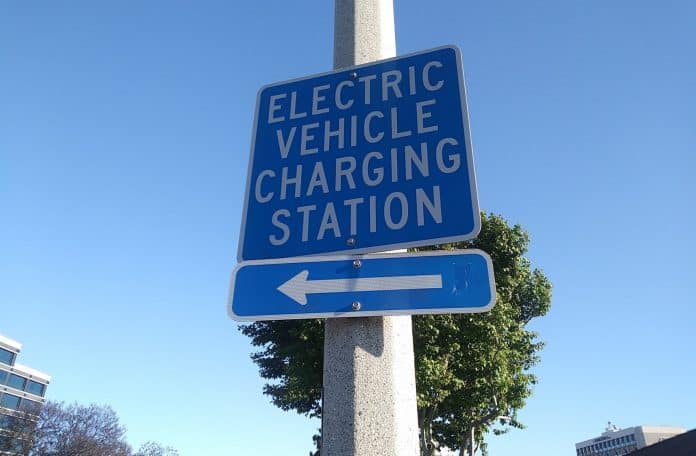A new report from two environmental research organizations concludes that most states are grossly under-using the $3 billion Volkswagen Environmental Mitigation Trust Fund to implement electric school buses and transit buses.
The nonprofit organizations U.S. PIRG Education Fund and Environment America Research & Policy Center released the 20-page paper on Thursday. Both organizations refer to themselves as nonpartisan. U.S. PIRG identifies as a counterweight to special interest groups that “threaten our health, safety or well-being,” while Environment America researches and advocates in support of clean air and water.
The report ranks the effectiveness of Beneficiary Mitigation Plans that have been developed by all 50 states and D.C. The plans describe how each share of VW funds will be used to purchase eligible vehicles and infrastructure, namely electric, CNG, propane or diesel.
“Although technically allowable under the settlement, for states to spend this money on outdated diesel or other fossil fuel technology would be a wasted opportunity,” wrote authors Matt Casale and Brendan Murphy of U.S. PIRG.
States are ranked using eight criteria, ranging from prioritization of purchasing electric vehicles, to funding allocated for diesel.
Hawaii and Washington received “A+” scores for planning to use all funds to purchase electric buses and charging infrastructure. Rhode Island received an “A” for prohibiting any diesel bus purchases. Vermont also received an “A” for allocating a small amount of funds to diesel.
Only 11 other states received passing grades of “C” or better.
That left 21 states and D.C. with poor “D” grades for failing to prioritize electric vehicle investment in funding or their state goals, according to U.S. PIRG. Fourteen states and Puerto Rico received an “F” for adopting the minimum guidelines for the spending allotment and failing to prioritize any electric projects. The authors said states with failing grades could allow for up to 100 percent of their awards to go toward new diesel purchases.
“Climate change is a health emergency for our families and our communities,” concluded Morgan Folger, director of Environment America Research & Policy Center Clean Cars Campaign. “States have the unique opportunity to fund projects that will cut carbon pollution by electrifying our cars, trucks and buses. We all deserve clean air and a stable climate, so we should make the most of the Volkswagen settlement money and accelerate electrification.”
But diesel continues to dominate the large school bus market, despite inroads made over the past few years by propane. According to a survey of school bus manufacturers last fall, the number of new diesel vehicle builds outpaced propane by nearly 11 to 1 for the manufacturing period of Nov. 1, 2017, through Oct. 31, 2018.
CNG and electric school buses registered mere blips on the school bus radar. Combined, the two accounted for not quite 2 percent of all buses manufactured.
“Forecasters seem to agree that, for the next five to 15 years and beyond, diesel will remain the primary technology for commercial trucking, thanks to its unique combination of features,” said Allen Schaeffer, executive director of the Diesel Technology Forum (DTF) at the Fuels Institute annual meeting this week in Dallas.
Schaeffer asked, “Will there be some inroads made in niche fleets and operations using all-electric, hybrid or hydrogen technologies? Yes, of course. Some of these technologies are in development and limited use today, as manufacturers are developing a range of fuels and technologies to best serve their customers. It’s safe to say we’ll also see an increasing use of biodiesel and renewable diesel fuels, as well as the next-generation of diesel that is even nearer-to-zero emissions.”
DTF argues that active selective catalytic reduction (SCR) systems that use diesel exhaust fluid (DEF) as a catalyst, along with diesel particulate filters (DPF) to reduce oxides of nitrogen (NOx) emissions by up to 90 percent, hydrocarbon and carbon monoxide emissions by 50- to 90 percent and particulate matter emissions by over 90 percent.
According to the U.S. Energy Information Administration, diesel fuel emits 161.3 pounds of carbon dioxide per million British thermal units, or BTUs, compared to 139 pounds from propane and 117 pounds from CNG.
The data does not reflect near-zero-emissions now possible from propane systems that meet the 0.02 grams of NOx brake/horsepower per hour. And electric emits no emissions from the tailpipe. Still, electric vehicles have a carbon footprint when accounting for material mining, refining and manufacturing.
A recent study by Volkswagen found that where diesel performs better is in the production phase. Battery production and raw material extraction for its e-Golf passenger car resulted in 96.55 percent more carbon dioxide emissions than for its Golf TDI (29 g CO2/km versus 57 g CO2/km).
Still, VW concluded that the e-Golf emits 15 percent less CO2 over the entire lifecycle than the Golf TDI (119 g CO2/km versus 140 g CO2/km). The e-Golf also emitted over 44 percent less CO2 (111 g CO2/km) during the use phase than its diesel counterpart (140 g CO2/km). “It is evident that in the vehicle with an internal combustion engine, most of the emissions occur during the use phase, that is, in the supply chain of the fossil fuel and the combustion,” the report found.














